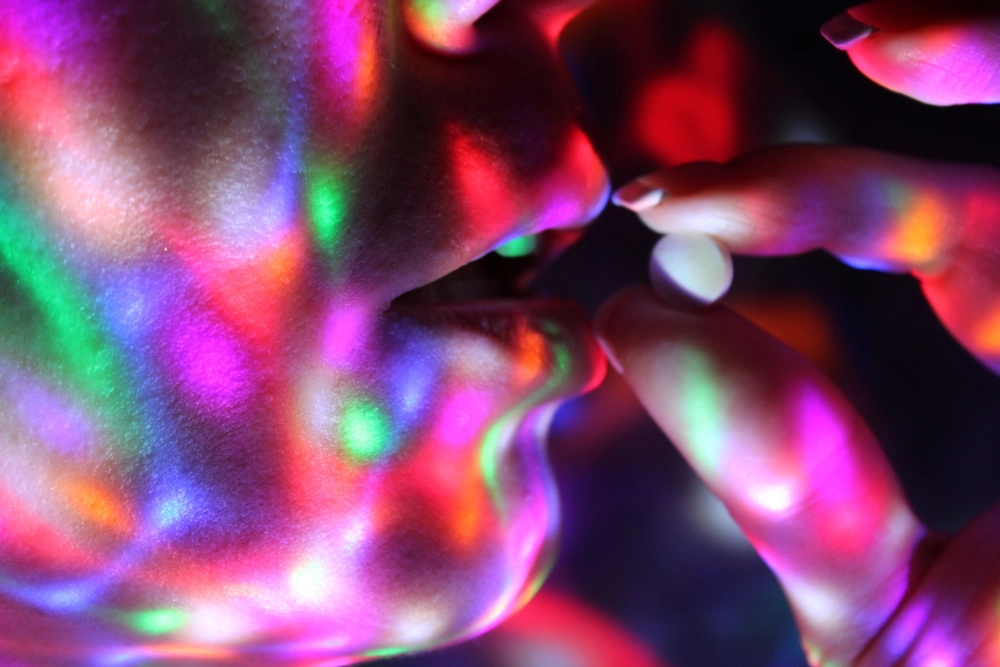Understanding Effects of Ecstasy MDMA Addiction

Commonly known as “ecstasy,” MDMA (chemical name 3,4 methylenedioxy-methamphetamine) is a synthetic substance which produces psychoactive effects (i.e., it influences perception). Ecstasy is different from other substances in that it’s both a hallucinogen and stimulant that causes the user to experience higher energy and emotional sensitivity. In the brain, ecstasy causes the brain to release serotonin, a neurotransmitter (chemical messenger) that works as a short-term antidepressant by elevating mood.
It’s sold in tablet form, usually in different colors and with different maker logos. Ecstasy is distinguished from “Molly,” which is MDMA in powder in a capsule. Molly may be pure or cut with additives whereas ecstasy contains little MDMA and is usually cut with other things like speed or heroin.
There are many street names for MDMA or ecstasy including:
- E
- Cadillac
- California Sunrise
- Clarity
- Essence
- Hug
- Eve
- Love Drug
- Love Pill
- Molly
- Snowball
Although the substance may not be physically addictive, using ecstasy is never a safe thing to do. Users who have died following use of ecstasy rarely die from overdose. Rather, multiple factors, such as heatstroke or an existing heart condition, can contribute to death. In addition to health hazards, users should be mindful of the criminal risks; possession of ecstasy is illegal and can carry long prison sentences in some jurisdictions.
How is Ecstasy Used?
Ecstasy can be taken orally (swallowed), intra-nasally (inhaled), smoked or injected. The most common method of ingestion is by swallowing tablets or capsules containing a powdered mixture. High purity crystals are also reported. Ecstasy is absorbed from the gastrointestinal tract within 30 minutes, peak (highest) serum levels are achieved after one to three hours.
The amount of ecstasy users consume varies greatly, with some users taking half a tablet, while others report taking multiple on a single occasion. Some users report stacking, or consuming multiple doses at once, while others report boosting, by taking subsequent additional doses.
The unregulated nature of ecstasy contributes to its potential danger and associated health risks. Tablets and powder sold on the street have variable purity, at times containing little or no ecstasy at all. Often, the ecstasy is mixed, or even replaced with other harmful and toxic substances such as ketamine, kratom, salvia and synthetic cannabinoids.
The large variability in ecstasy formulations creates a large risk of inadvertently ingesting excessive amounts or additional unknown toxins.
Signs of Ecstasy MDMA Use
It takes about 20-30 minutes following the consumption of ecstasy for its effects to take hold. The duration and intensity of the effects of ecstasy depend on different factors like other substances consumed. Generally, psychoactive effects of MDMA can last between one and three hours. However, there are reports of residual effects, such as depression and anxiety lasting for weeks after use.
Some of the signs that someone may be taking MDMA or ecstasy include:
- Intense focus on senses
- Rapid eye movement
- Severe paranoia or anxiety
- Jaw clenching
- Trance-like state
- Unusually affectionate behavior
- Vomiting, nausea
- Sweating, chills
Is Ecstasy Addictive?
The topic of whether ecstasy is addictive remains controversial. While studies have shown that repeated ecstasy use does not result in the same degree of addiction potential as substances such as cocaine, alcohol or heroin, the risk of dependence does exist.
Signs of ecstasy abuse include developing a tolerance, an increased desire to use, an increased time spent acquiring and using the drug or drug use impacting day-to-day functions negatively.
Ecstasy users are much more likely to abuse other substances both legally and illegally, such as alcohol, marijuana, cocaine, inhalants, heroin and amphetamines.
Ecstasy Abuse Statistics
Ecstasy and MDMA are abused worldwide. Amphetamine-type stimulants such as ecstasy are the second most used drugs after marijuana. The availability of ecstasy increased dramatically over the last several decades. The United Nations Office on Drugs and Crimes, UNODC, estimated in 2011 that the annual prevalence for ecstasy ranged between 0.2% to 0.6% of the world’s population between the ages 15 and 64 (11 to 28 million people) and a 2014 report found that 6.6% (17.8 million) of people ages 12 or older used ecstasy at least once in their lifetime.
Some additional statistics about ecstasy use include:
- Ecstasy use decreased significantly among high school students since its peak in 2011-2012.
- Prevalence in men. Men in the United States have an increased rate of ecstasy use compared to women, with one analysis reporting that 8.3% of men reported using ecstasy at least once, 3.4% used in the last year and 1.6% used in the last 30-days.
- Prevalence in women. Women in the United States use ecstasy at lower rates than men, with 5.6% of women reported using ecstasy at least once, 2.3% used in the last year and 0.6% used in the last 30-days.
- Teen abuse. The use of ecstasy in students in high school has increased significantly over the past 30 years. Exposure of ecstasy to high school seniors has almost quadrupled over the past decade, with a peak of 9.2% of seniors reporting use in 2001. Since then, there has been a significant drop in use among teens, with 2018 data indicating that 1.1% of 8th graders, 1.4% of 10th graders and 2.2% of 12 graders reported use within the past year.
- Ecstasy abuse and treatment trends in Washington and Oregon. Data from Oregon suggests that, although use is down from its peak in 2010, rates of ecstasy use increased between 2016 and 2017, although precise figures were not reported. According to a study evaluating drug use state-by-state, Oregon ranked 12th out of the 50 states and Washington D.C. Data on drug use trends in King County (Seattle) between 2012 and 2016 suggest that ecstasy prevalence is low, with zero reported admissions to substance use rehabilitation facilities in 2016 and 1.1% of total drug reports involved MDMA. According to a study evaluating drug use state-by-state, Washington ranked 30th out of the 50 states and Washington D.C.
Treatment Options for MDMA Abuse
At this time, there are no specialized treatment approaches for ecstasy use specifically. However, ecstasy abusers have been responsive to traditional rehab treatment methodologies including:
- Medical detox
- Inpatient treatment programs
- Group and individual therapy
- Outpatient programs
- Aftercare
Although there are no targeted medications that are presently approved to treat ecstasy abuse, antidepressants may be prescribed in the case of a co-occurring mental health disorder.
Ecstasy MDMA Addiction Treatment
The Recovery Village Ridgefield offers ecstasy MDMA treatment for patients in residential treatment programs, partial hospitalization programs, intensive outpatient proograms and outpatient treatment programs. Our facility also offers aftercare programs for patients which have shown to be effective. If you are considering seeking treatment for your ecstasy/MDMA addiction, give us a call today and allow us to help you get your life back on track.
Sources
Jerome, Lisa; Baggott, Matthew. “Demographics and Self-Reported Effects of Illicit Ecstasy Use.” Multidisciplinary Association for Psychedelic Studies, August 2001. Accessed August 21, 2019. Landry, Mim. “MDMA: A Review of Epidemiological Data.” The Journal of Psychoactive Drugs, September 6, 2011. Accessed August 15, 2019. Oregon-Idaho HIDTA Program. “Drug Threat Assessment 2019.” June 2018. Accessed August 21, 2019. Kiernan, John S. “Drug Use by State: 2019’s Problem Areas.” WalletHub, May 2019. Accessed August 21, 2019. National Drug Early Warning System. “King County (Seattle Area) SCS Drug Use Patterns and Trends, 2017.” Center for Substance Abuse Research, November 2017. Accessed August 21, 2019. United Nations Office on Drugs and Crime. “Amphetamines and Ecstasy, 2011 Global ATS Assessment.” Accessed August 12, 2019. Substance Abuse and Mental Health Services Administration. “Results from the 2014 National Survey on Drug Use and Health: Detailed Tables.” September 2015. Accessed August 21, 2019.
View Sources
Jerome, Lisa; Baggott, Matthew. “Demographics and Self-Reported Effects of Illicit Ecstasy Use.” Multidisciplinary Association for Psychedelic Studies, August 2001. Accessed August 21, 2019. Landry, Mim. “MDMA: A Review of Epidemiological Data.” The Journal of Psychoactive Drugs, September 6, 2011. Accessed August 15, 2019. Oregon-Idaho HIDTA Program. “Drug Threat Assessment 2019.” June 2018. Accessed August 21, 2019. Kiernan, John S. “Drug Use by State: 2019’s Problem Areas.” WalletHub, May 2019. Accessed August 21, 2019. National Drug Early Warning System. “King County (Seattle Area) SCS Drug Use Patterns and Trends, 2017.” Center for Substance Abuse Research, November 2017. Accessed August 21, 2019. United Nations Office on Drugs and Crime. “Amphetamines and Ecstasy, 2011 Global ATS Assessment.” Accessed August 12, 2019. Substance Abuse and Mental Health Services Administration. “Results from the 2014 National Survey on Drug Use and Health: Detailed Tables.” September 2015. Accessed August 21, 2019.




